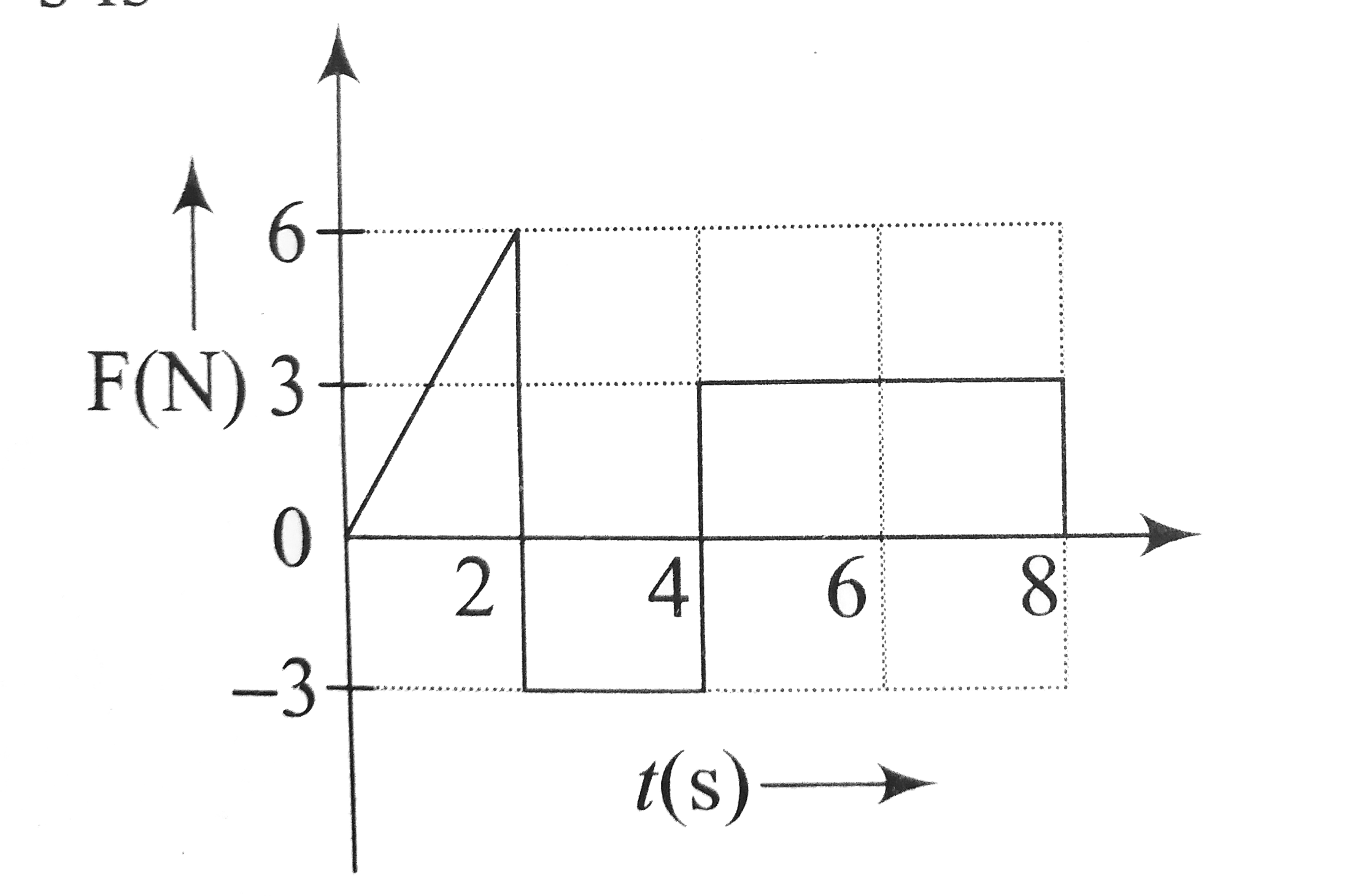A partical of mass m is driven by a machine that deleveres a constant power k watts. If the partical starts from rest the force on the partical at time t is
√mk2t−1/2
√mkt−1/2
√2mkt−1/2
12√mkt−1/2
The correct Answer is:a
To find the force on a particle of mass m that is driven by a machine delivering a constant power k watts, we can follow these steps:
Step 1: Understand the relationship between power, work, and kinetic energy.
The power delivered by the machine is defined as the rate of doing work. Mathematically, this can be expressed as:
P=Wt
where W is the work done and t is the time. Given that the power is constant and equal to k, we can write:
W=k⋅t
Step 2: Apply the work-energy theorem.
According to the work-energy theorem, the work done on the particle is equal to the change in kinetic energy. Since the particle starts from rest, its initial kinetic energy is zero. Therefore, the work done can be expressed as:
W=ΔKE=12mv2−0=12mv2
Step 3: Set the expressions for work equal to each other.
From the previous steps, we have:
k⋅t=12mv2
Rearranging this gives:
mv2=2kt
Step 4: Solve for velocity v.
Dividing both sides by m, we find:
v2=2ktm
Taking the square root of both sides, we get:
v=√2ktm
Step 5: Find the acceleration a.
Acceleration is the derivative of velocity with respect to time:
a=dvdt
Using the expression for v:
a=ddt(√2ktm)
Using the chain rule:
a=12(2km)1/2t−1/2
This simplifies to:
a=√2km⋅12t−1/2
Step 6: Calculate the force F.
Using Newton's second law, the force can be expressed as:
F=m⋅a
Substituting the expression for a:
F=m⋅(√2km⋅12t−1/2)
This simplifies to:
F=m2⋅√2km⋅t−1/2
Further simplifying gives:
F=12√2km⋅t−1/2
Final Expression for Force
Thus, the force on the particle at time t is:
F=12√2km⋅t−1/2
The power delivered by the machine is defined as the rate of doing work. Mathematically, this can be expressed as:
P=Wt
where W is the work done and t is the time. Given that the power is constant and equal to k, we can write:
W=k⋅t
According to the work-energy theorem, the work done on the particle is equal to the change in kinetic energy. Since the particle starts from rest, its initial kinetic energy is zero. Therefore, the work done can be expressed as:
W=ΔKE=12mv2−0=12mv2
From the previous steps, we have:
k⋅t=12mv2
Rearranging this gives:
mv2=2kt
Dividing both sides by m, we find:
v2=2ktm
Taking the square root of both sides, we get:
v=√2ktm
Acceleration is the derivative of velocity with respect to time:
a=dvdt
Using the expression for v:
a=ddt(√2ktm)
Using the chain rule:
a=12(2km)1/2t−1/2
This simplifies to:
a=√2km⋅12t−1/2
Using Newton's second law, the force can be expressed as:
F=m⋅a
Substituting the expression for a:
F=m⋅(√2km⋅12t−1/2)
This simplifies to:
F=m2⋅√2km⋅t−1/2
Further simplifying gives:
F=12√2km⋅t−1/2
Thus, the force on the particle at time t is:
F=12√2km⋅t−1/2
Similar Questions
A particle of mass m is driven by a machine that delivers a constant power k watts. If the particle starts from rest the force on the particle at time t is
View SolutionA particie of mass 10 kg is driven by a machine that delivers a constant power of 20 watts. If particle starts from rest and moves along a straight line, then force (in Newton) on particle at time t(t> 0) is
View SolutionA body of mass 2 kg is driven by an engine delivering a constant power of 1 J /s. The body starts from rest and moves in a straight line. After 9 seconds, the body has moved a distance ( in m) ……….. .
View SolutionForce acting on a particle of mass m moving in straight line varies with the velocity of the particle as F=K/V K is constant then speed of the particle in time t
View SolutionEngine of car of mass m supplies a constant power P. Starting from rest at an instant of time, then
View SolutionA body is moved along a straight line by a machine delivering constant power . The distance moved by the body is time t is proptional to
View SolutionA body is moved along a straight line by a machine delivering constant power . The distance moved by the body is time t is proptional to
View SolutionA body is moved along a straight line by a machine delivering constant power . The distance moved by the body is time t is proptional to
View SolutionA particle of mass 2kg is moving of a straight line under the actin force F=(8−2x)N. It is released at rest from x=6m.
a. Is the partical moving simple harmonically.
b.Find the equilibrium position of the particle.
c. Write the equation of motion of the partical.
d. Find the time period of SHM.
View SolutionThe force F acting on a partical of mass m is indicated by the force-time graph shown below. The change in momentum of the particle over time interval from zero to 8 s is.

View Solution